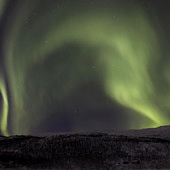ESA Science & Technology - News Archive
News archive
News archive
New research using data from multiple spacecraft, including ESA's Cluster mission, has revealed the cause behind the sudden brightening of the auroral oval before it breaks up into a substorm.
Published: 31 July 2020
Using over 18 years of data from ESA's Cluster mission, scientists have mapped the heavy metals in the space surrounding Earth, finding an unexpected distribution and prevalence of iron and shedding light on the composition of our cosmic environment.
Published: 19 March 2020
Data from ESA's Cluster mission has provided a recording of the eerie 'song' that Earth sings when it is hit by a solar storm.
Published: 18 November 2019
In a powerful example of combining multi-mission satellite data with computer simulations, scientists have used ESA's Cluster mission to reveal details about how electrons interact with waves in Earth's magnetic environment.
Published: 4 March 2019
Using unprecedented in-situ data from ESA's Cluster mission, scientists have shed light on the ever-changing nature of Earth's shield against cosmic radiation, its bow shock, revealing how this particle accelerator transfers and redistributes energy throughout space.
Published: 27 February 2019
This Announcement of Opportunity (AO) solicits proposals for participation in the Cluster Guest Investigator and Early Career Scientist programme. The deadline for Letters of Intent is 28 March, 12:00 (noon) CET and Proposals are due by 29 May 2019, 12:00 (noon) CEST.
Published: 25 February 2019
Space weather is no abstract concept – it may happen in space, but its effects on Earth can be significant. To help better forecast these effects, ESA's Cluster mission, a quartet of spacecraft that was launched in 2000, is currently working to understand how our planet is connected to its magnetic environment, and unravelling the complex...
Published: 8 November 2018
As inhabitants of the third rock from the Sun, we have a vested interest in understanding our home planet and its environment. Among the flotilla of spacecraft that have been sent to investigate Earth from space are the four spacecraft of the Cluster mission.
Published: 8 February 2018
For the first time, scientists have estimated how much energy is transferred from large to small scales within the magnetosheath, the boundary region between the solar wind and the magnetic bubble that protects our planet.
Published: 29 January 2018
ESA's Cluster mission is challenging the current view of magnetic reconnection – the breaking and immediate rearrangement of magnetic field lines in the collision of two plasma flows.
Published: 10 April 2017
Earth's atmosphere is leaking. Every day, around 90 tonnes of material escapes from our planet's upper atmosphere and streams out into space. Although missions such as ESA's Cluster fleet have long been investigating this leakage, there are still many open questions.
Published: 7 July 2016
ESA's Cluster mission has solved a mystery which puzzled scientists for almost half a century. Data sent back by two of the spacecraft have revealed for the first time the physical mechanism behind the generation of "noisy" waves in near-Earth space.
Published: 14 July 2015
Cluster and Swarm find evidence of strikingly similar phenomena at different altitudes for the first time, showing a link between Earth's ionosphere and magnetosphere.
Published: 1 July 2015
Most people have heard of auroras - more commonly known as the Northern and Southern Lights - but, except on rare occasions, such as the recent widespread apparition on 17 March, they are not usually visible outside the polar regions. Less familiar are phenomena known as black auroras, dark patches which often subdivide the glowing curtains of...
Published: 9 April 2015
Auroras are the most visible manifestation of the Sun's effect on Earth, but many aspects of these spectacular displays are still poorly understood. Thanks to ESA's Cluster and NASA's IMAGE satellites working together, a particular type of very high-latitude aurora has now been explained.
Published: 18 December 2014
The Sun is a variable star, experiencing 11-year-long cycles of activity which impact our planet and near-Earth space. Forecasting the changing space weather and the effects it will have on Earth remains a challenge, as illustrated by an unusual magnetic storm that was observed by ESA's Cluster quartet and one of the Chinese-ESA Double Star...
Published: 28 August 2014
For many years, scientists have been striving to understand the constantly changing structure and behaviour of the huge magnetic bubble that surrounds our planet. One approach – pioneered by Russian scientist Nikolai Tsyganenko - has been to develop models based on data sent back by spacecraft, such as ESA's Cluster quartet.
Published: 7 May 2014
This AO solicits special operation proposals for participation in the Guest Investigator Programme of the Cluster extended mission from the European Space Agency. Investigations are solicited which identify compelling utilization of the Cluster spacecraft payload for scientific study, for the period 2015-2016. The extended deadline for proposal...
Published: 17 February 2014
A new study using ESA's Cluster mission has shown improved precision in determining the source of a radio emission produced by the Earth. The experiment involved tilting one of the four identical Cluster spacecraft to measure the electric field of this emission in three dimensions for the first time.
Published: 26 November 2013
Near-Earth space is populated by charged particles - electrons and ions - which occupy regions known as the plasmasphere and the Van Allen radiation belts. Over the past decade, the four identical spacecraft of ESA's Cluster mission have made numerous studies of these regions, and a recent paper has revealed intriguing links between these...
Published: 10 September 2013
—
20 Items per Page




















